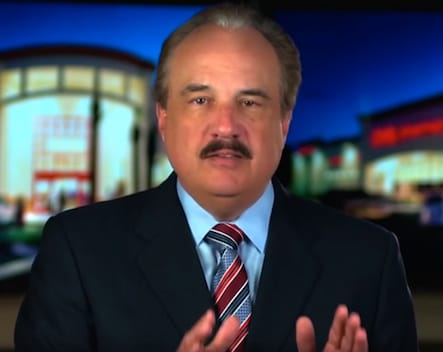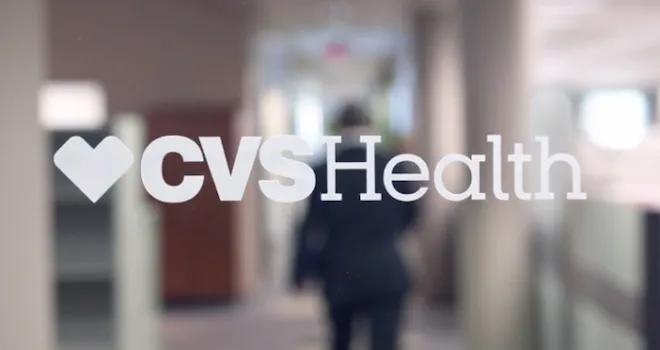WOONSOCKET, R.I. — CVS Health’s revenue was on the rise as it filled more prescriptions and benefited from a lower effective tax rate, the company said today in reporting its operating results for the three months ended March 31.
The drug store chain said its first quarter revenue increased 2.6% to $45.7 billion from $44.5 billion a year ago.

Larry Merlo
Revenue was up 5.6% in the Retail/Long-Term Care segment as same-store prescription volume rose 8.5%. In the Pharmacy Services segment, which includes the pharmacy benefit management business, revenue increased 3.2%.
CVS noted that it is still on track to acquire health insurer Aetna Inc. in the second half of the year. Shareholders of both companies have approved the deal, valued at about $69 billion, which the companies say will help control rising health care costs.
Overall for the quarter, CVS reported a profit of $998 million, or 98 cents a share. Including adjustments such as a net interest expense on financing associated with the proposed Aetna deal, the company earned $1.48 a share. That is more than the adjusted earnings per share of $1.41 analysts expected. President and chief executive officer Larry Merlo stated, “We generated solid results in the quarter, benefiting from higher prescription volumes within our retail pharmacy business and a lower effective income tax rate. At the same time, we continue to focus on long-term growth initiatives and to invest in process improvements and technology enhancements that will position us well to expand our reach in providing access to high-quality and more affordable care.
“We continue to innovate in the health care market. Recently, we introduced ‘Real-Time Benefits,’ a process to share plan design in real time at the point of prescribing with the physician. During the first quarter, we also launched an initiative, ‘Rx Savings Finder,’ to combat rising drug prices. This initiative provides improved visibility into drug costs at the pharmacy counter. These initiatives have benefitted consumers by improving transparency and lowering costs.”
Merlo added, “Looking forward, the Aetna transaction will provide us the means to further lower health care costs for consumers and payors. In March, the transaction was approved by shareholders of both companies. We are moving forward on both the regulatory and integration planning fronts in support of a close in the second half of this year and a smooth, efficient integration of operations.”
Revenues in the Pharmacy Services segment rose 3.2% to about $32.2 billion. The increase was primarily driven by growth in pharmacy network and specialty claim volume as well as brand inflation, partially offset by continued price compression and increased generic dispensing. Pharmacy network claims processed during the three months increased 6% on a 30-day equivalent basis to 399.5 million, compared to 376.8 million in the prior-year period. The growth in pharmacy network claim volume was primarily due to an increase in net new business. On a 30-day equivalent basis, mail choice claims processed during the three months increased 8.9% to 69.3 million, compared to 63.7 million in the prior year. The growth in mail choice claim volume was driven by continued adoption of CVS’ Maintenance Choice offerings.
The 5.6% revenue increase in the Retail/LTC segment brought it to around $20.4 billion. The increase was primarily due to growth in same-store prescription volume of 8.5% on a 30-day equivalent basis, due to continued adoption of the company’s patient care programs, partnerships with PBMs and health plans, and inclusion in a number of additional Medicare Part D networks this year, as well as brand inflation. The increase was partially offset by continued reimbursement pressure and the impact of recent generic introductions.
Same-store sales increased 5.8%, and pharmacy same-store sales increased 7.3% in the quarter. The rise in pharmacy same-store sales was principally driven by the increase in pharmacy same-store prescription volumes described above, partially offset by a negative impact of about 280 basis points due to recent generic introductions.
Front-end store-same store sales increased 1.6% in the period, compared to the prior year, driven by a favorable impact of about 90 basis points from the shift of sales associated with the Easter holiday to the first quarter of 2018 from the second quarter of 2017. The impact of seasonal cough and cold sales amounted to about 70 basis points, partially offset by softer customer traffic.
The generic dispensing rate increased about 65 basis points to 87.6% in the Pharmacy Services segment and increased about 60 basis points to 88.1% in the Retail/LTC segment, compared to the same quarter in the prior year.
Consolidated operating profit grew $153 million, or 8.5%, to $1.9 billion. The growth was driven by a $199 million decrease in store rationalization costs compared to the same quarter in the prior year, offset by an $86 million loss on the divestiture of CVS’ RxCrossroads subsidiary, along with a $28 million increase in acquisition-related transaction and integration costs. The resulting rise in consolidated operating profit was principally driven by improvement in gross profit dollars in the Retail/LTC segment, largely a result of improvements in pharmacy gross profit dollars. These improvements were partially offset by increases in operating expenses associated with growth in the business.









